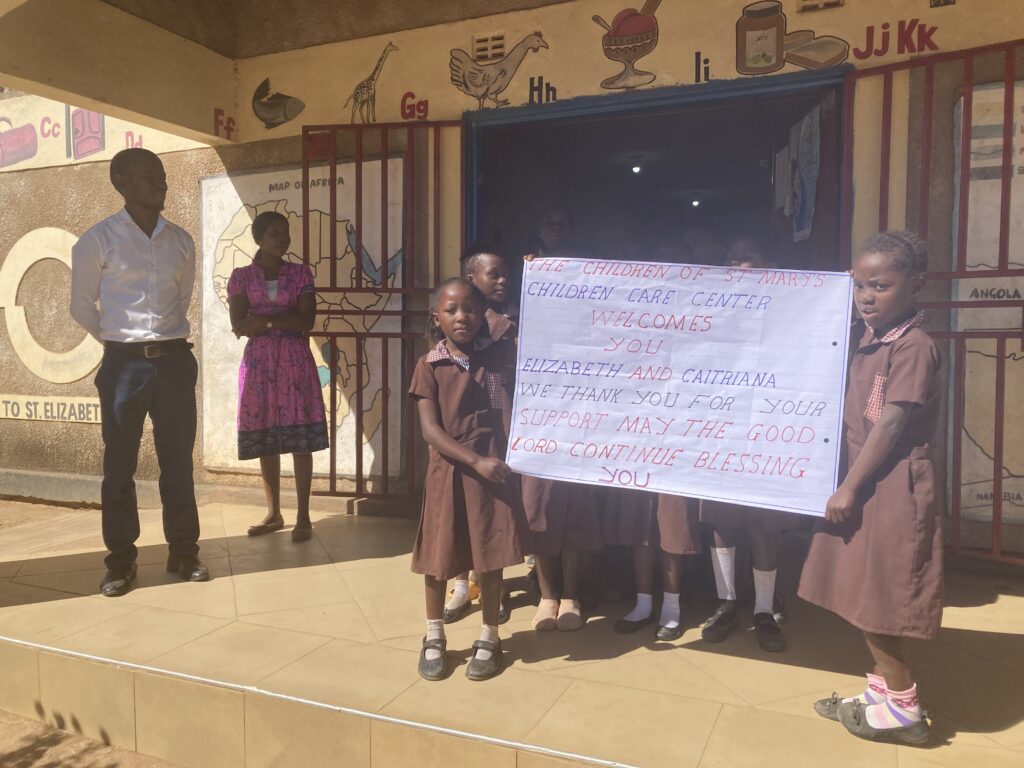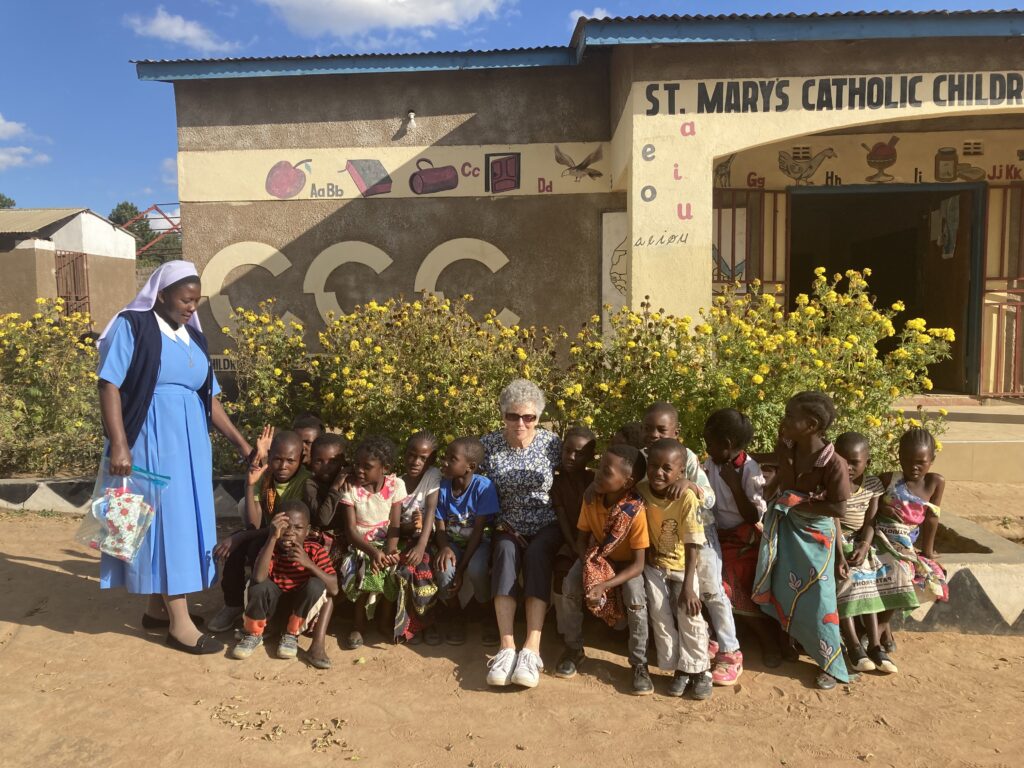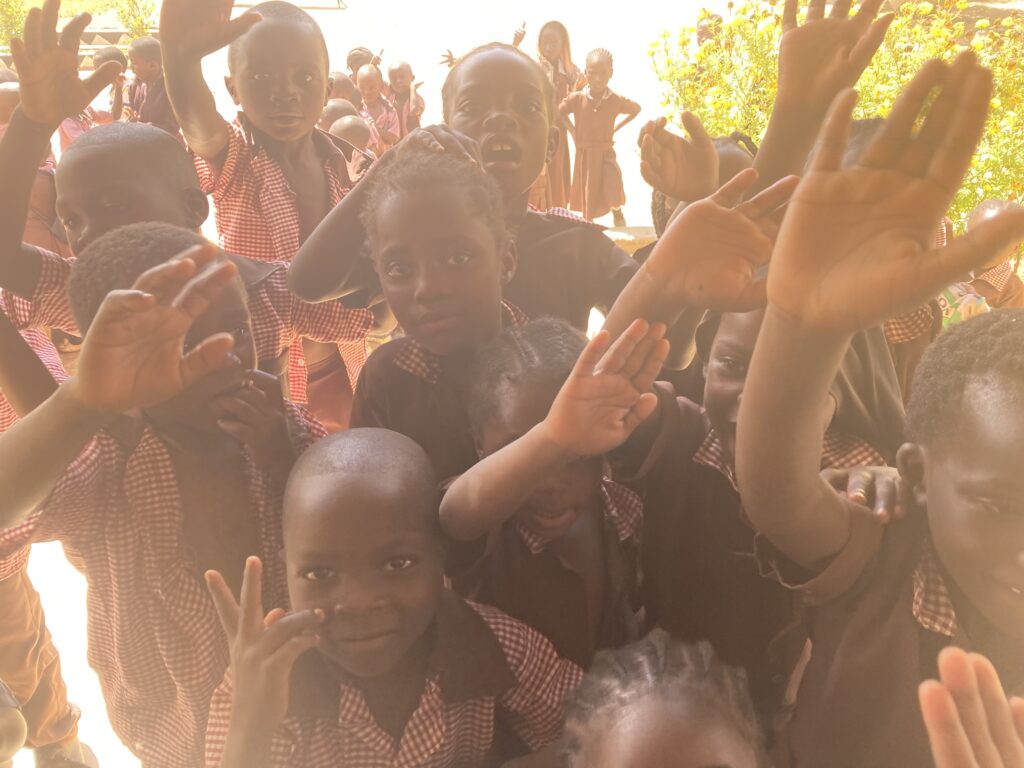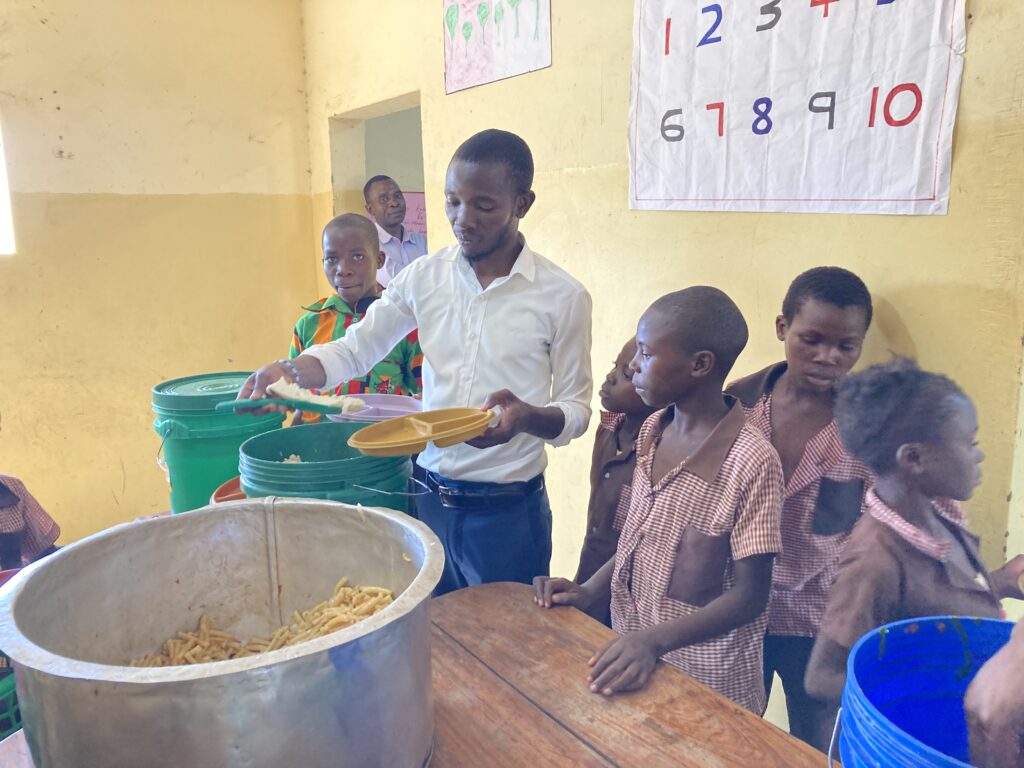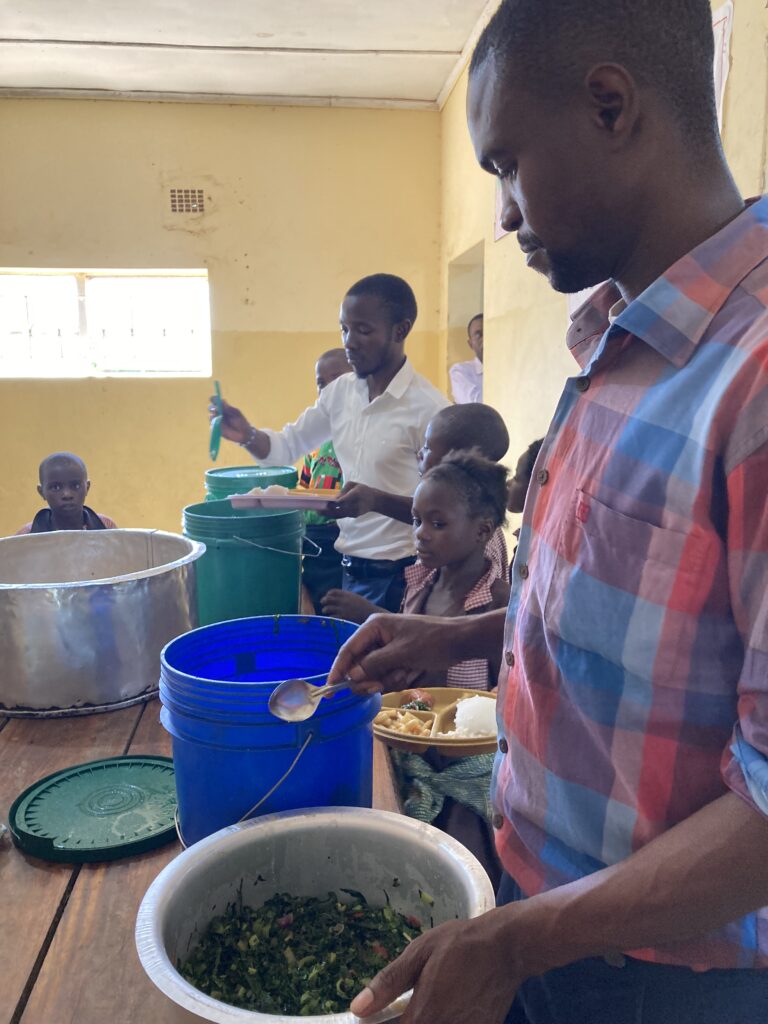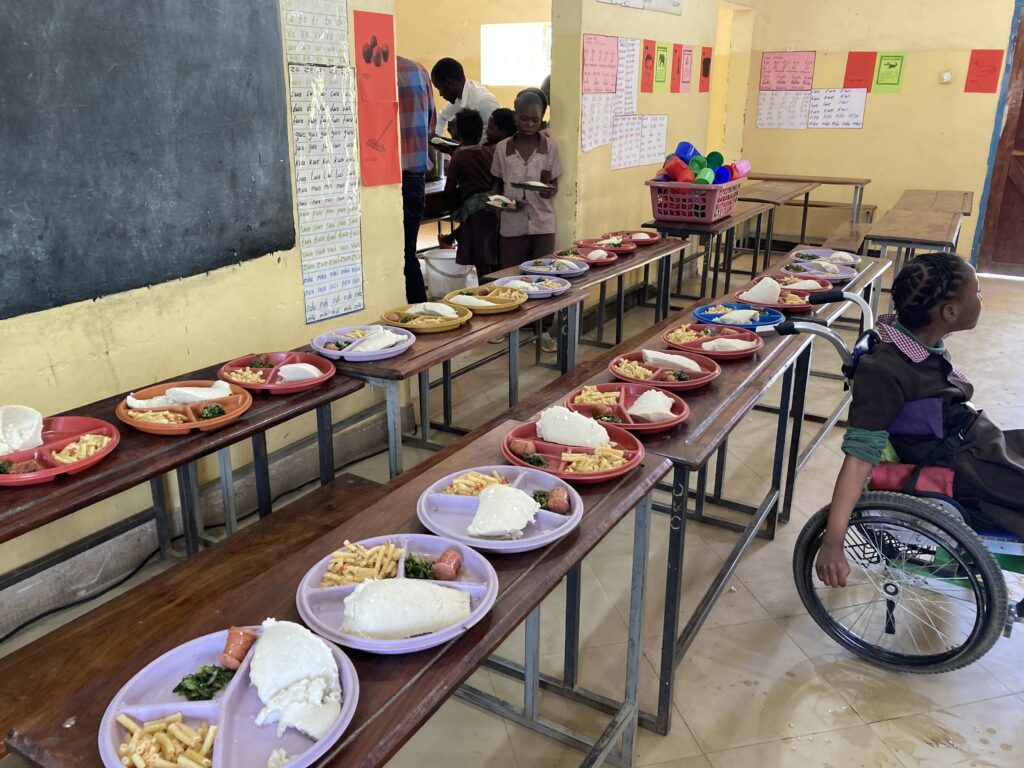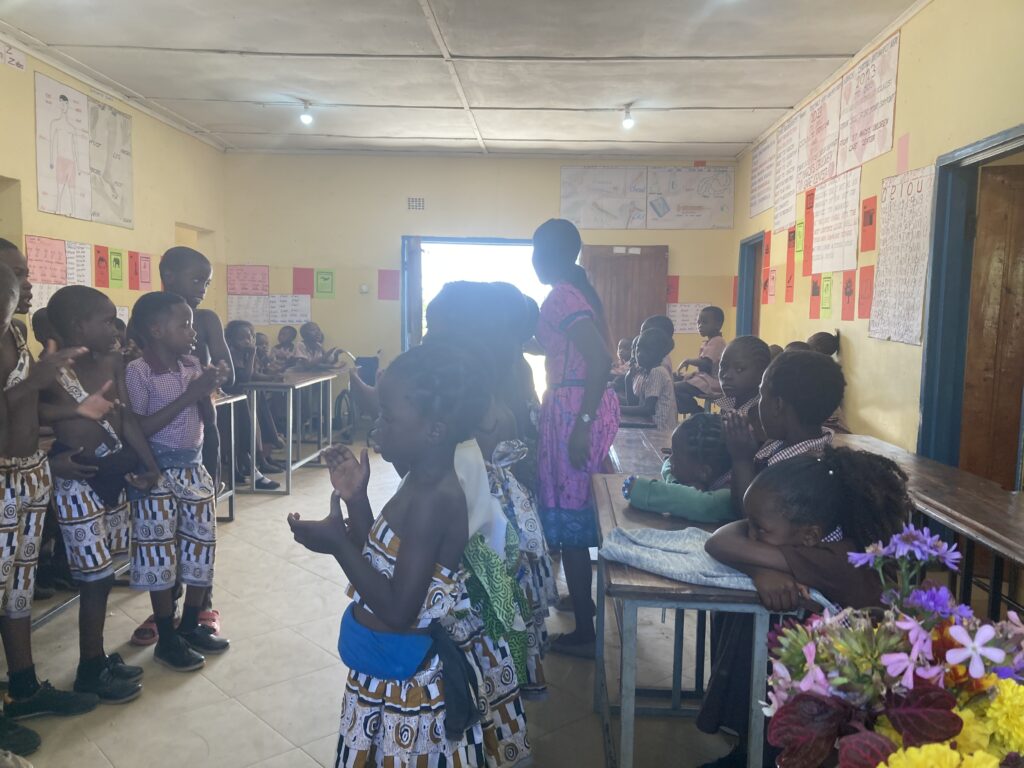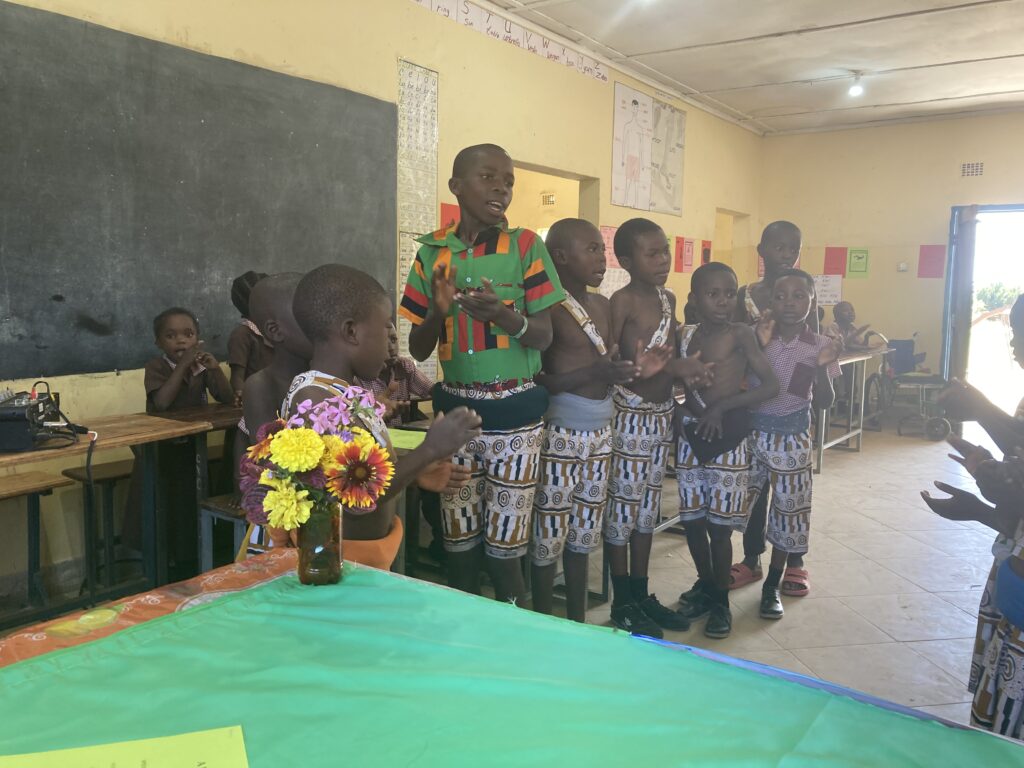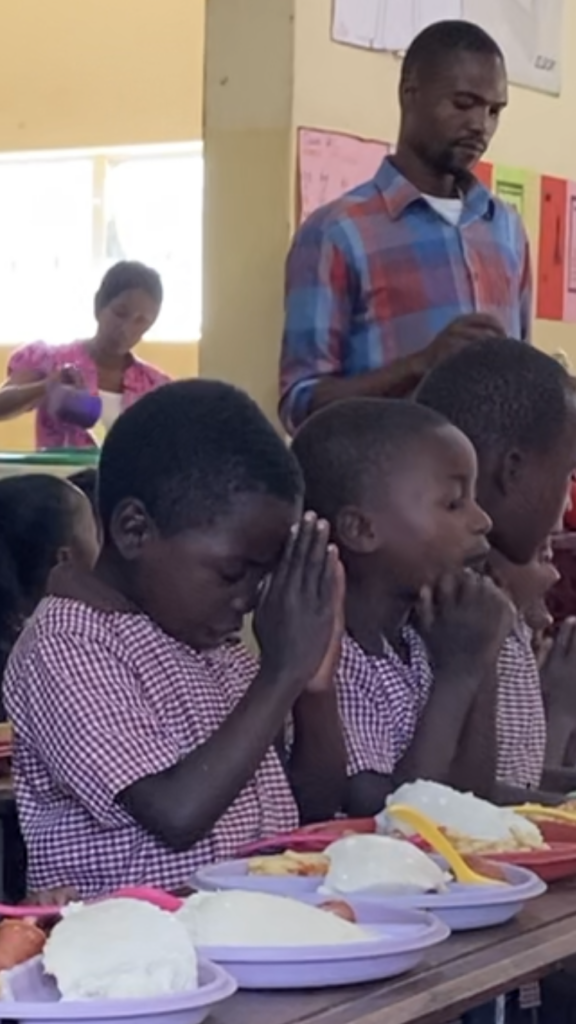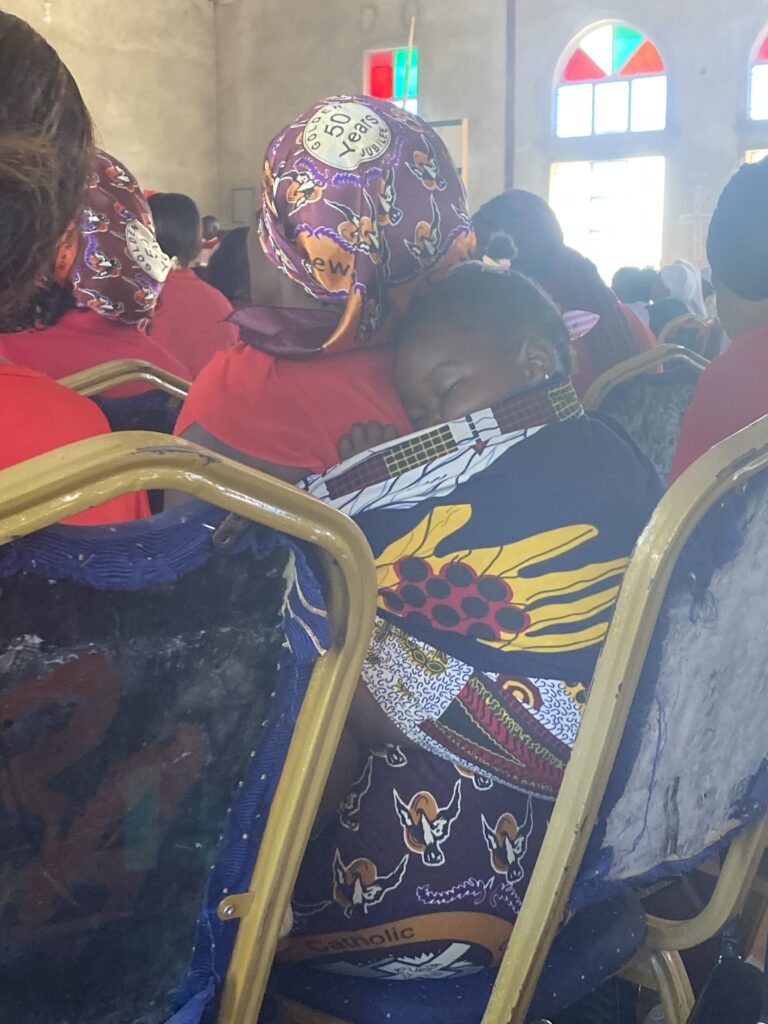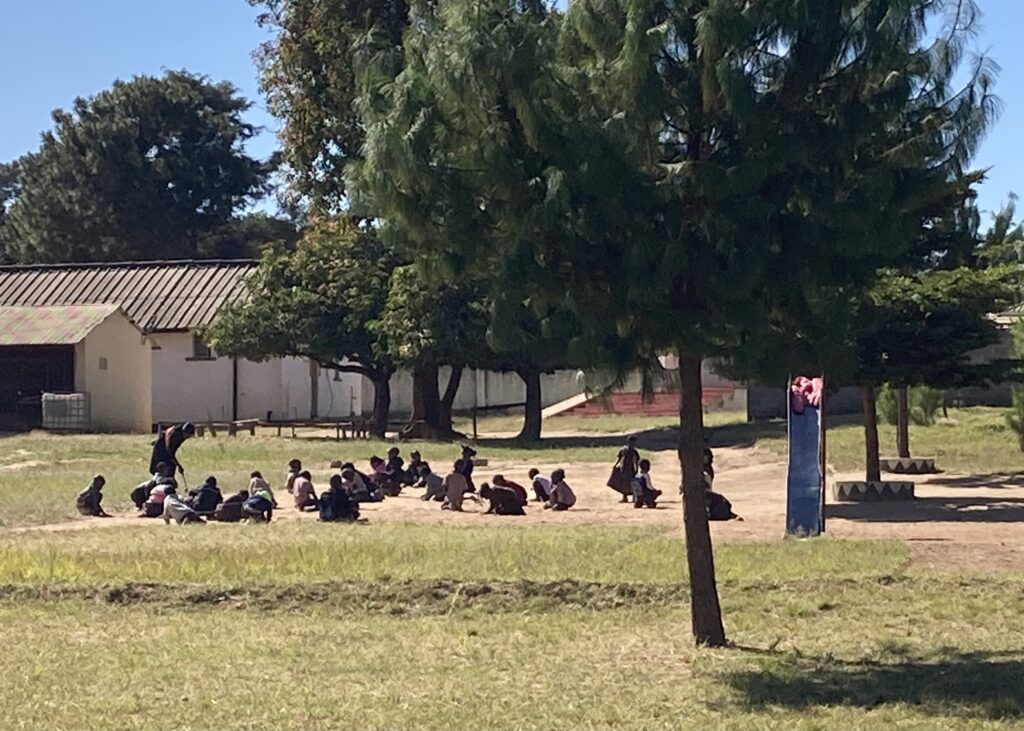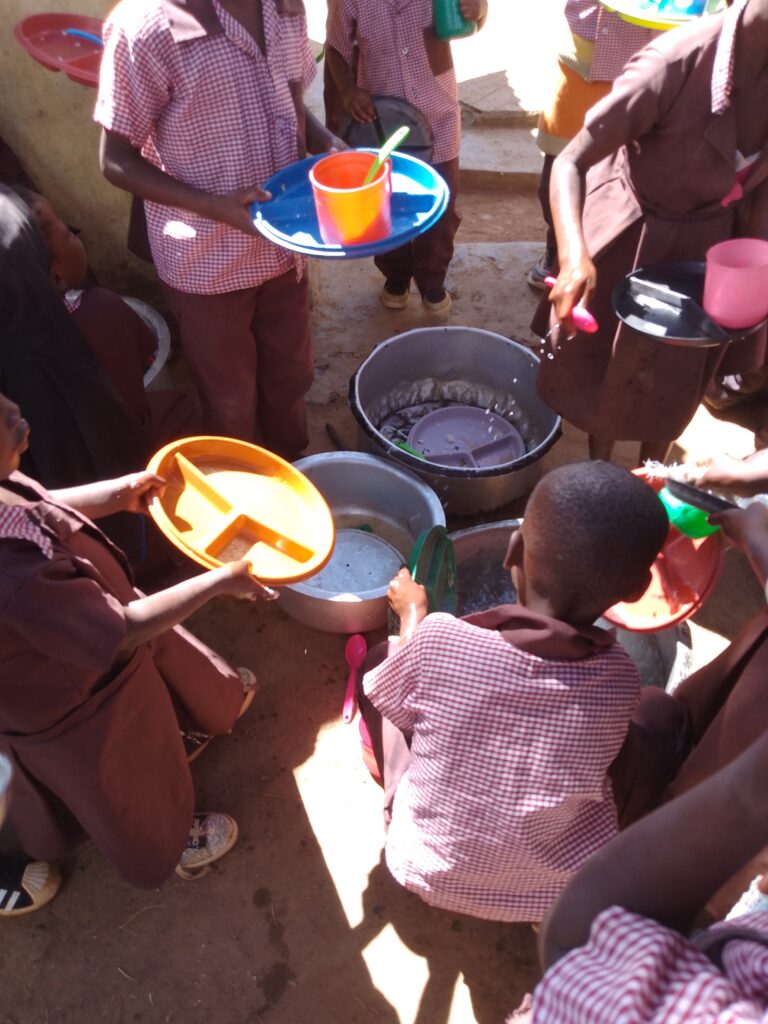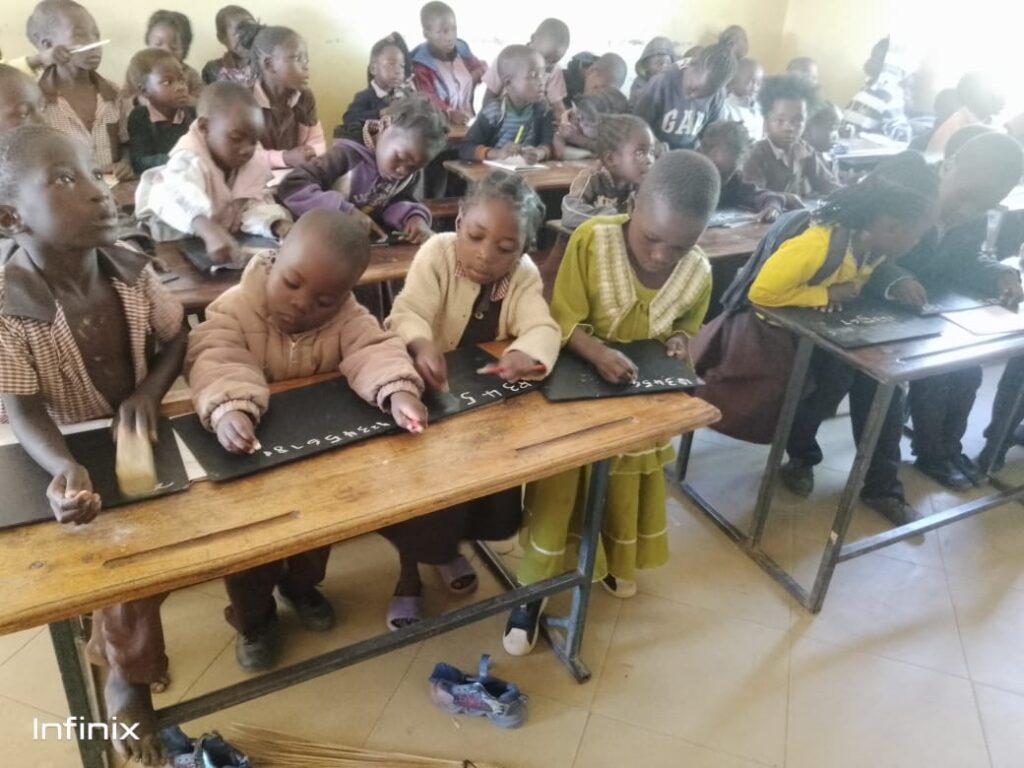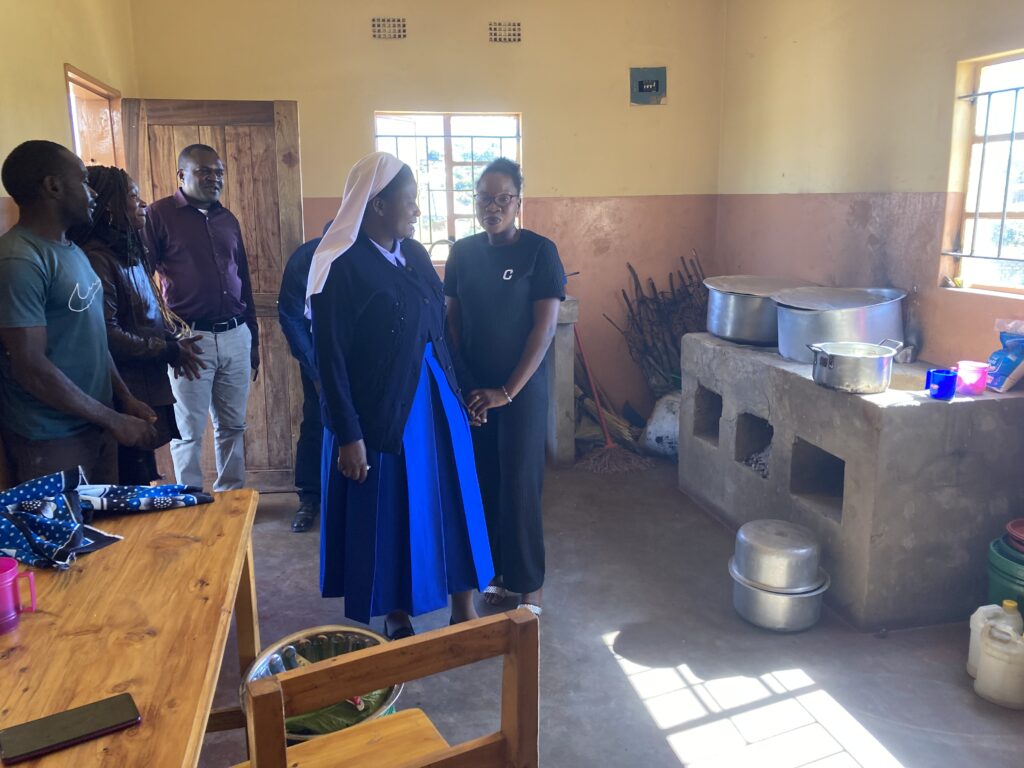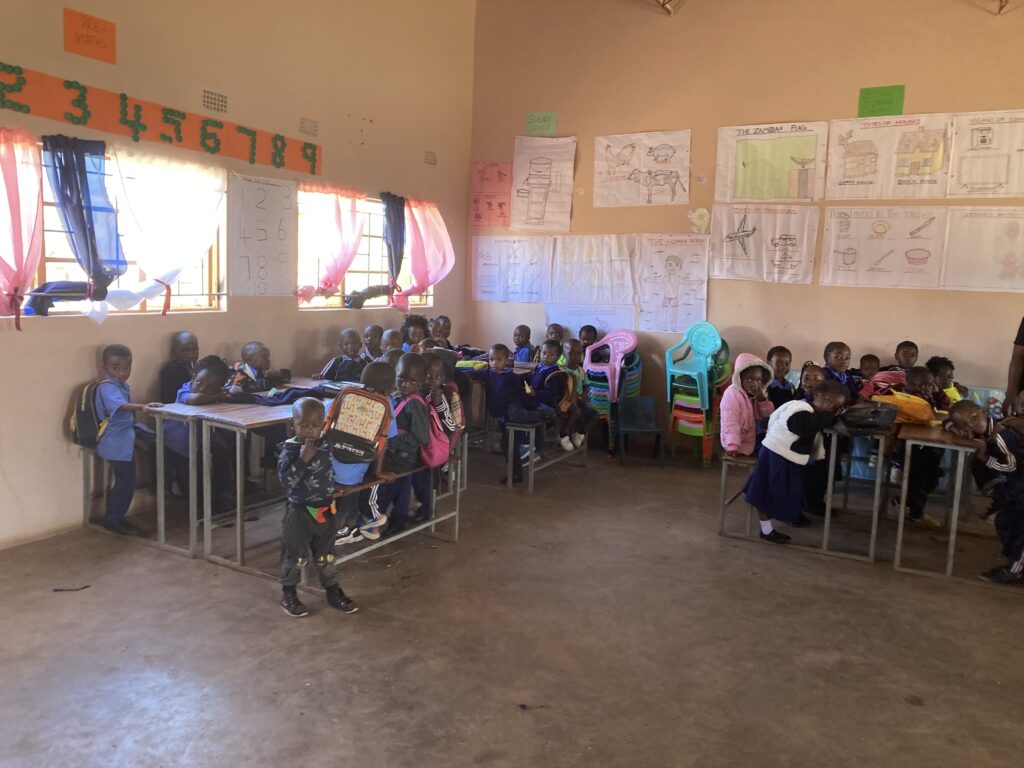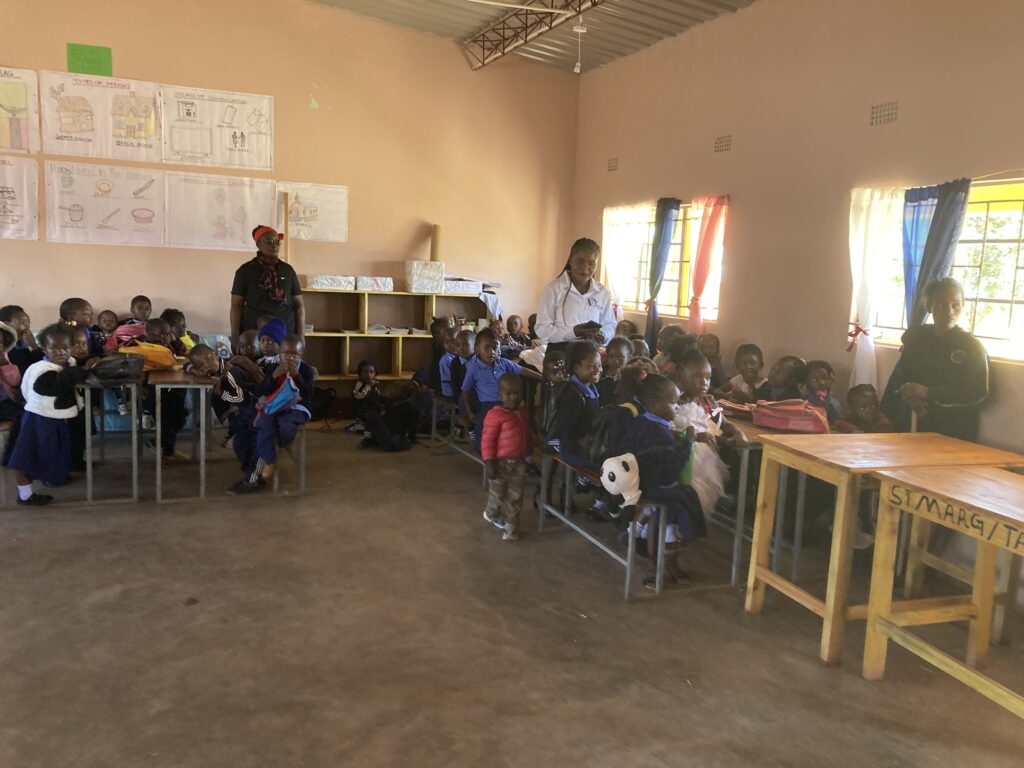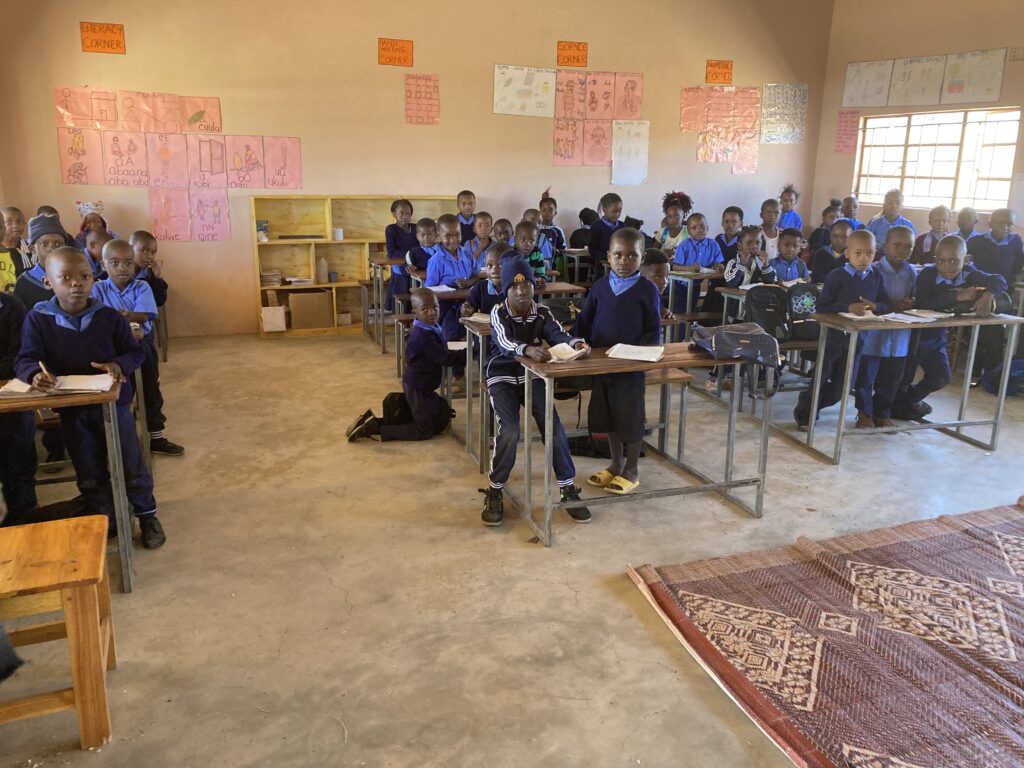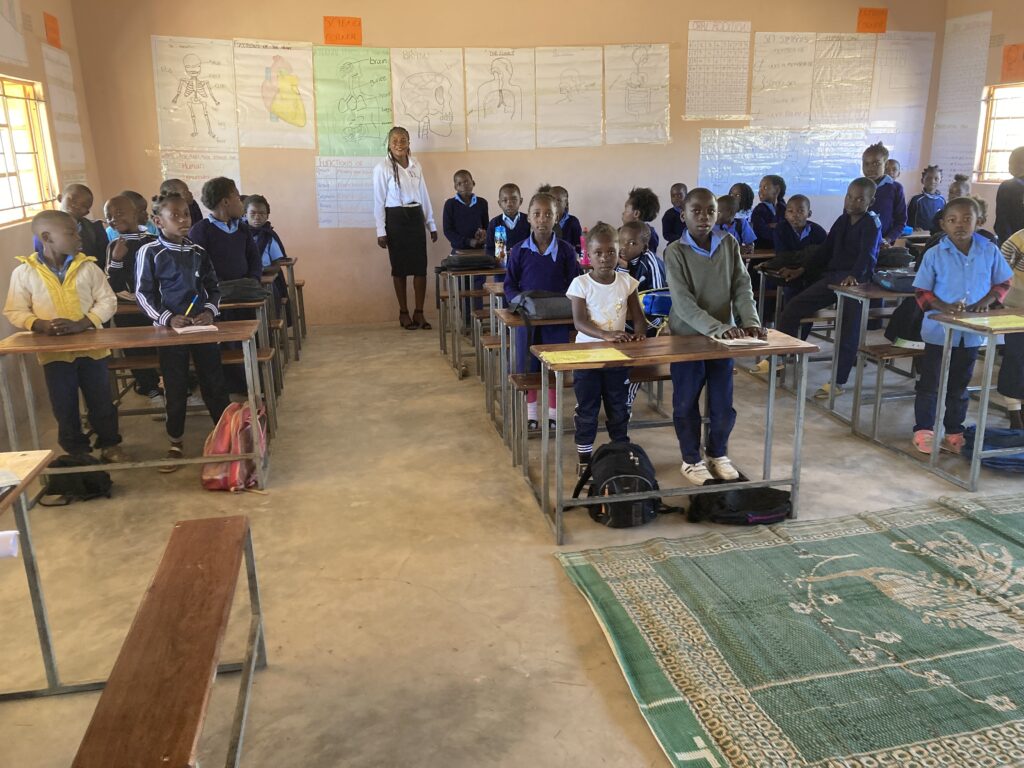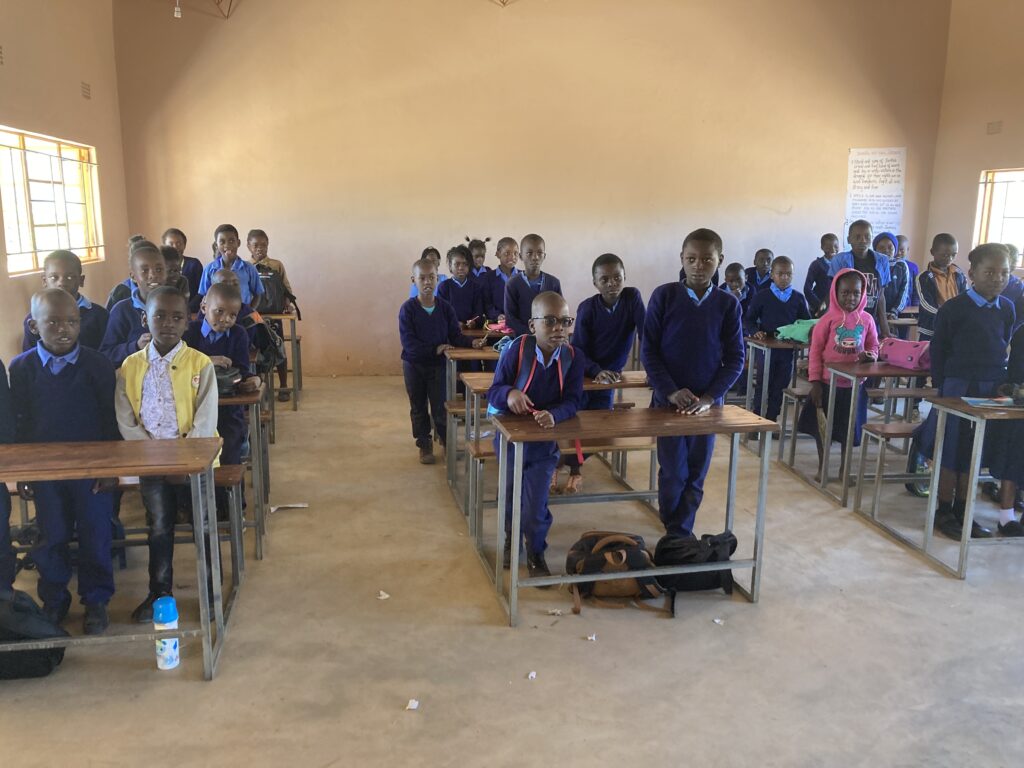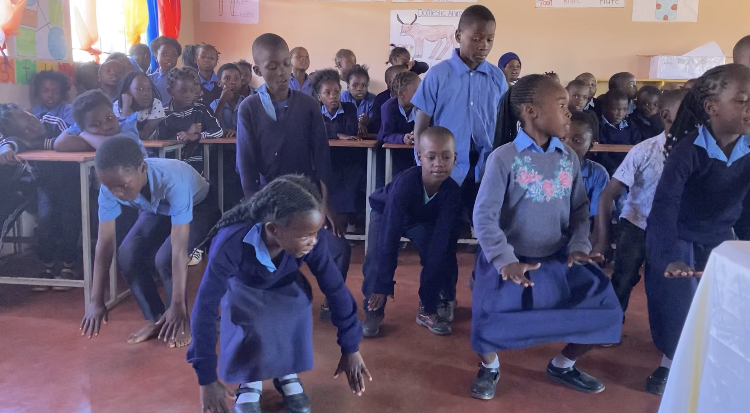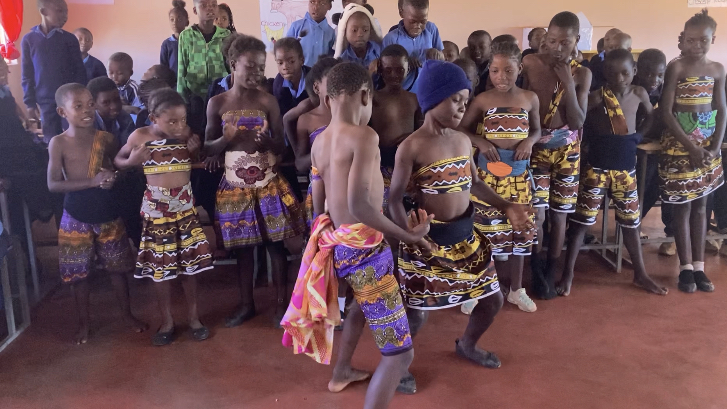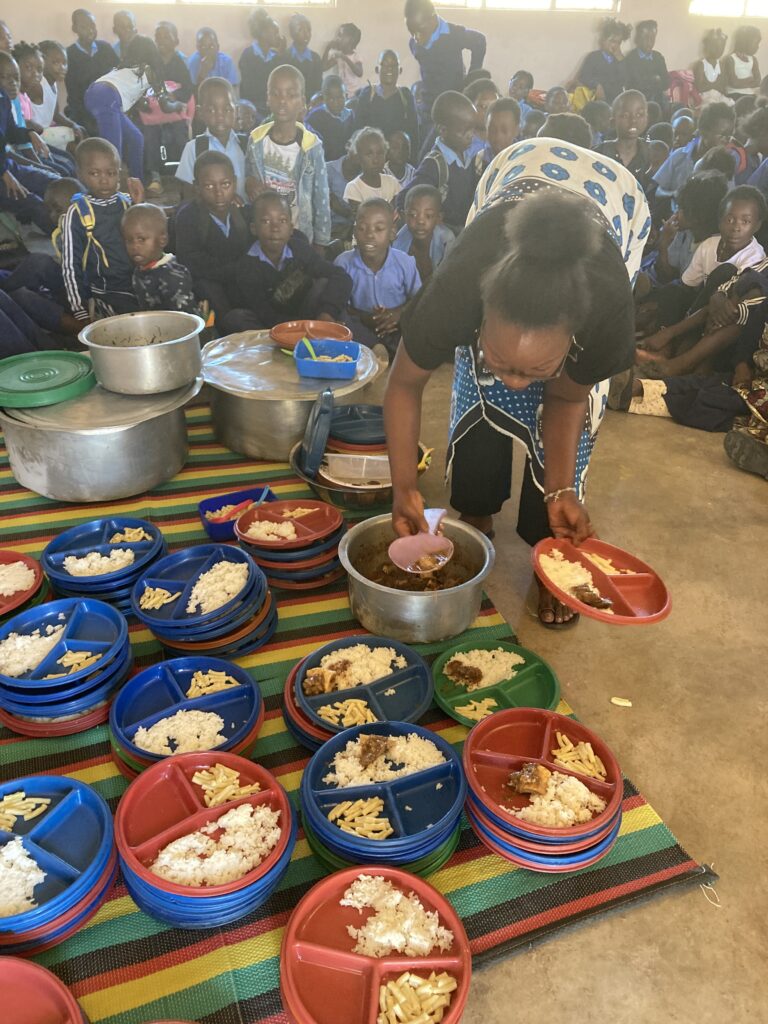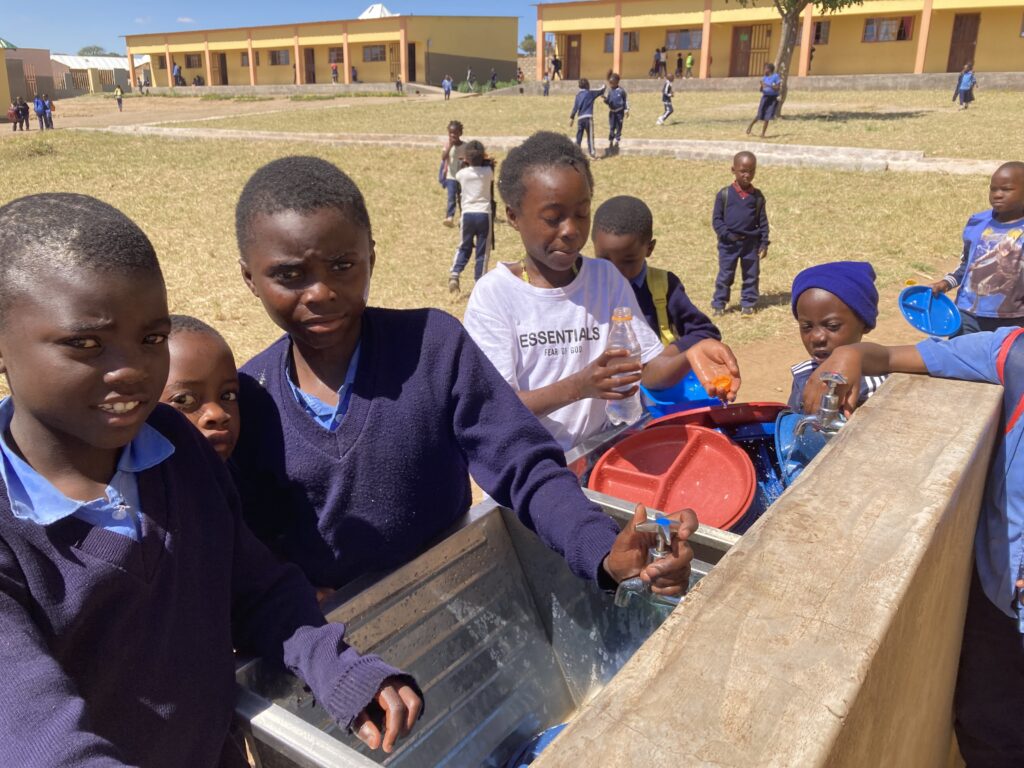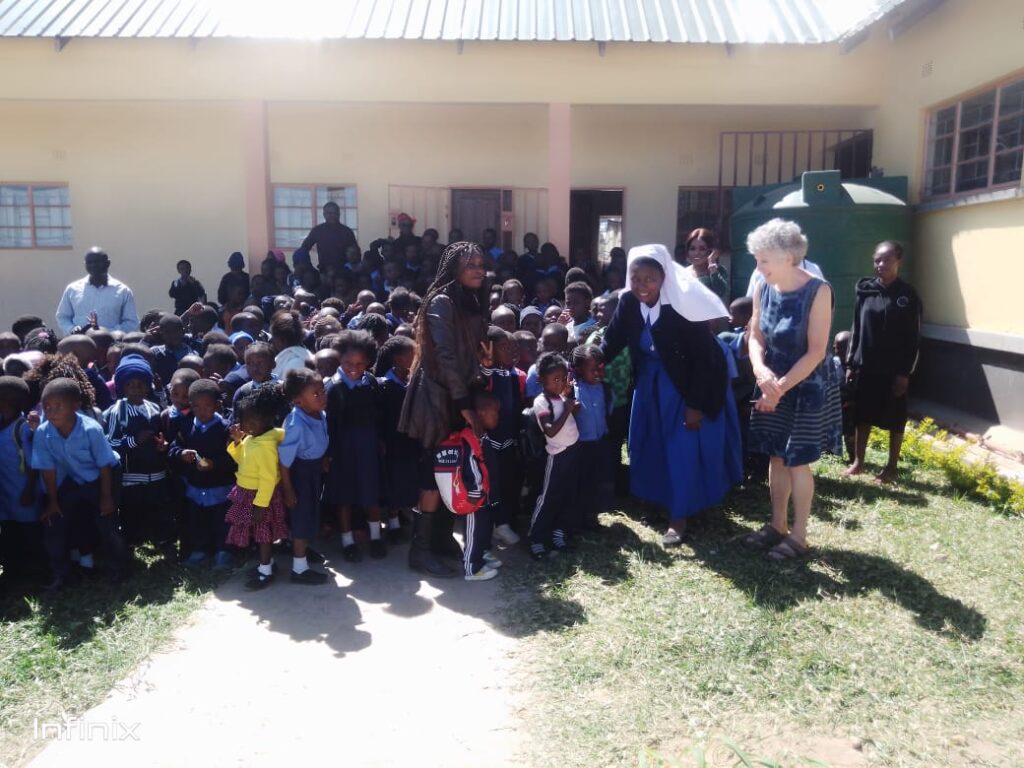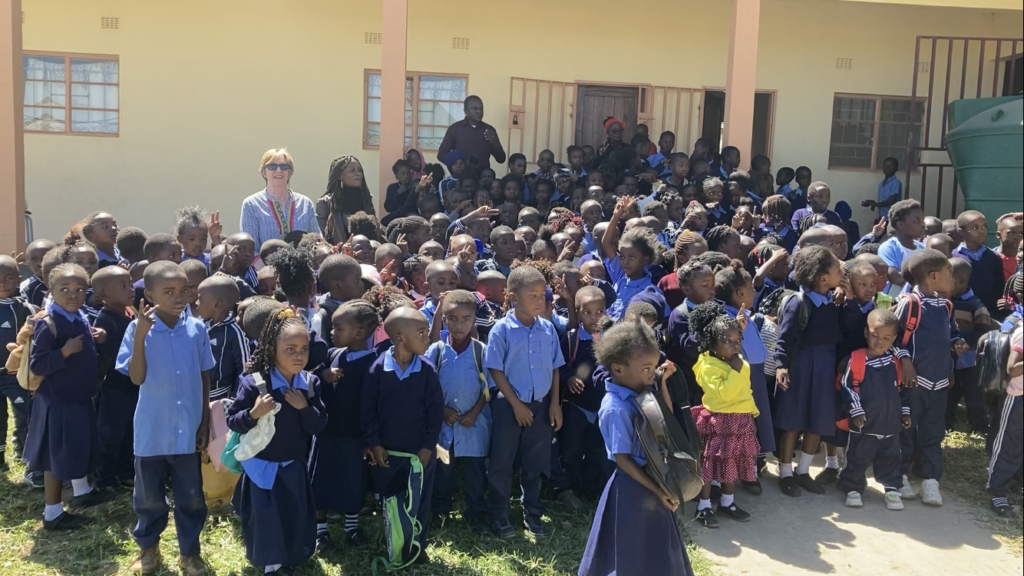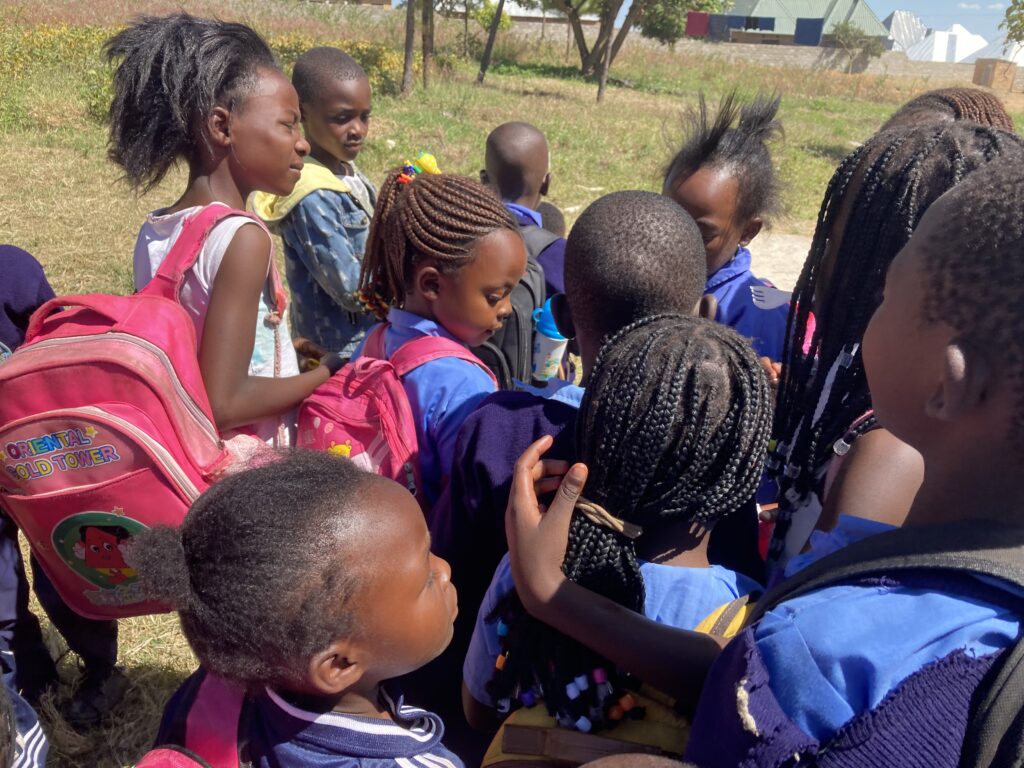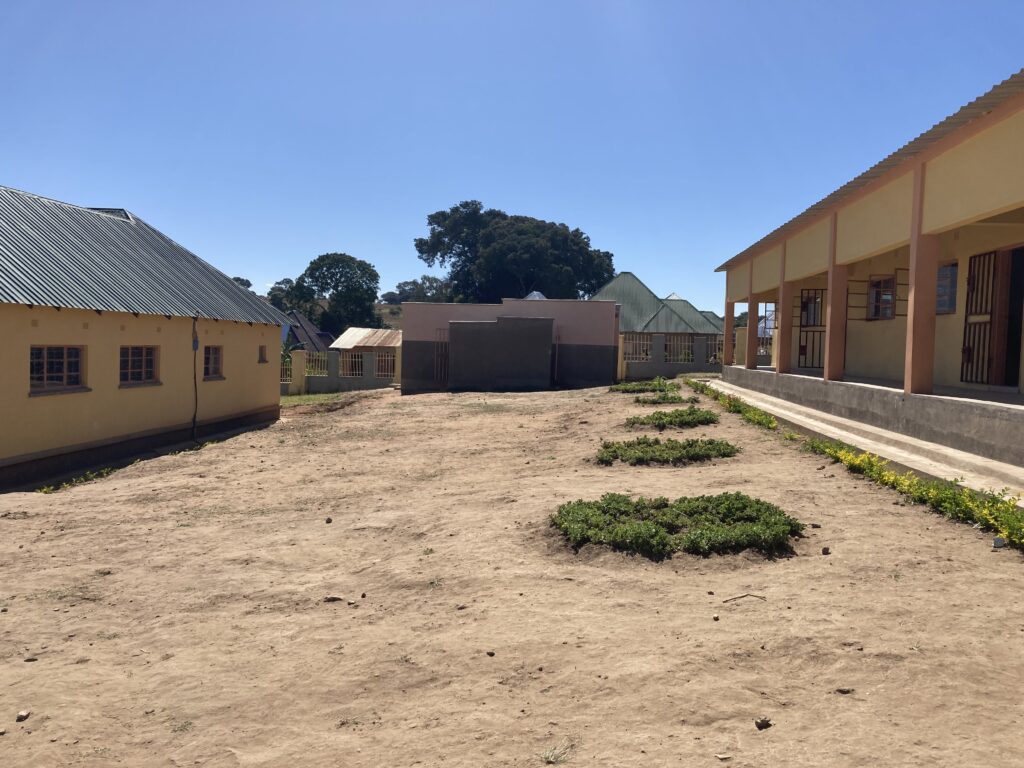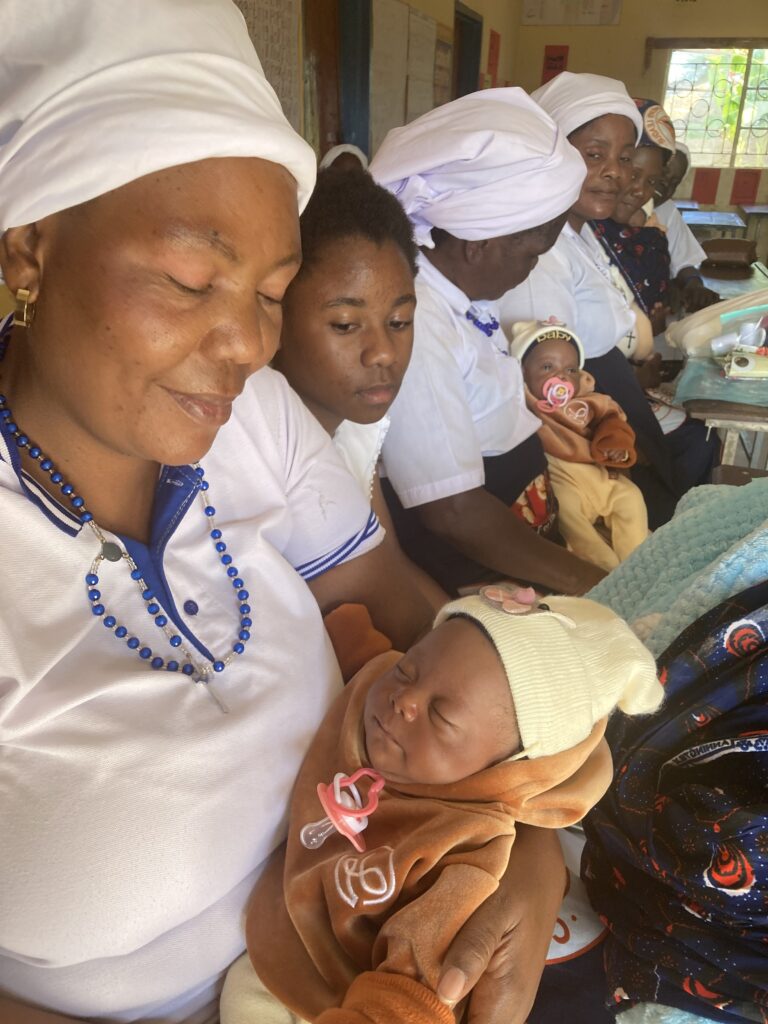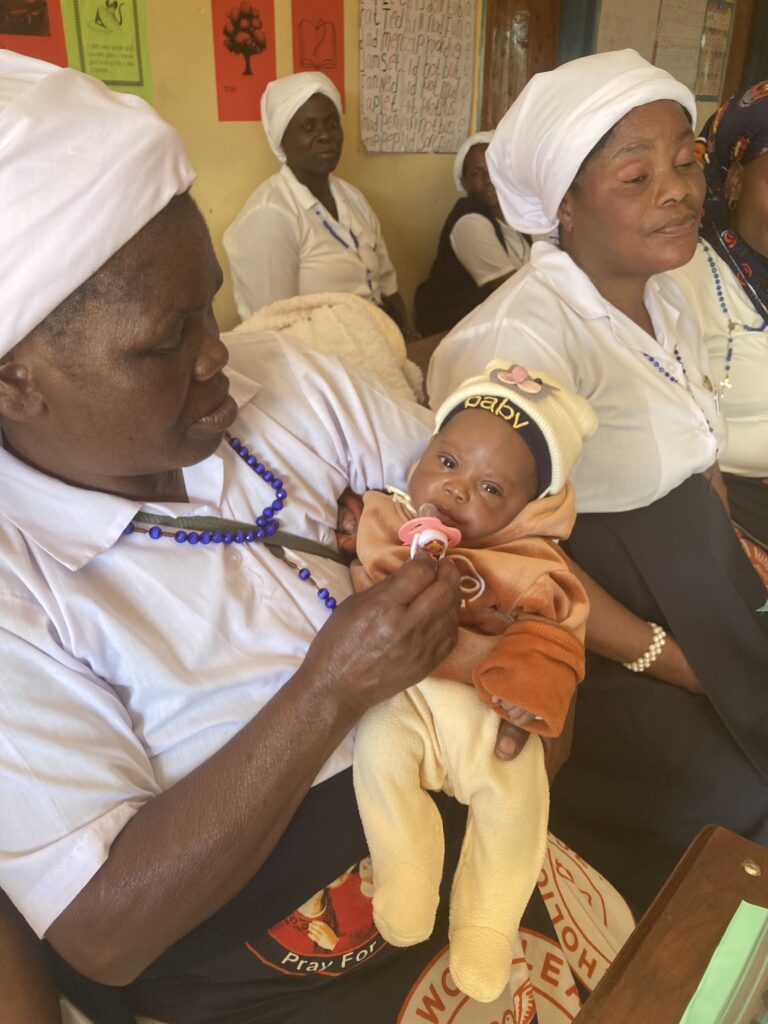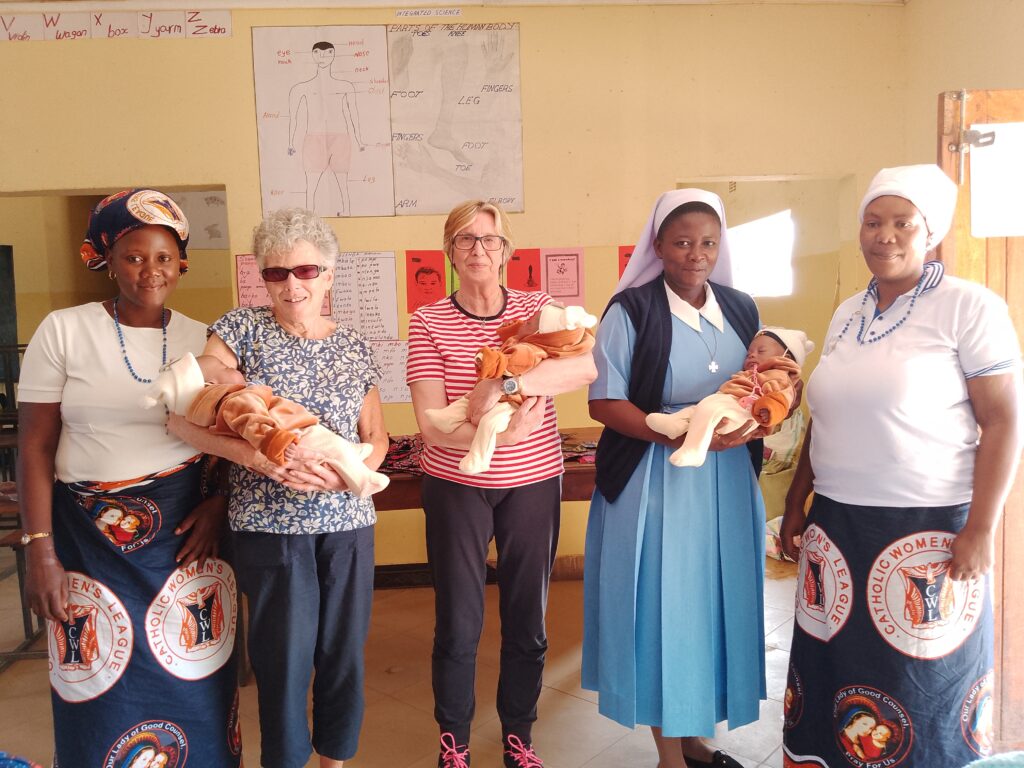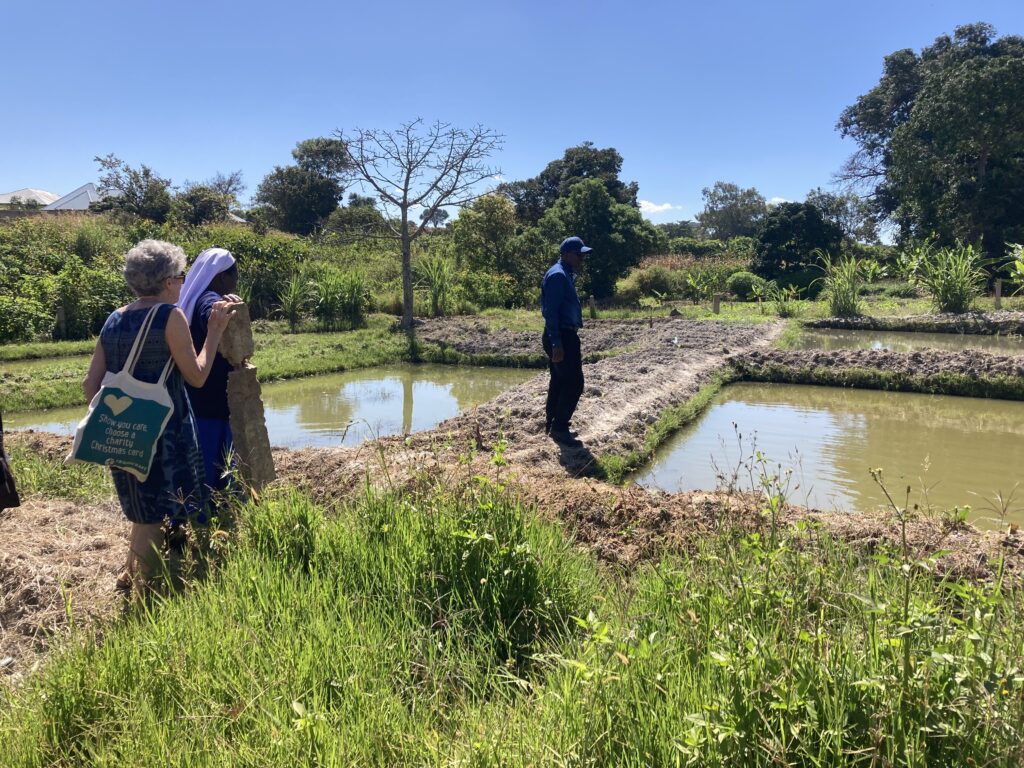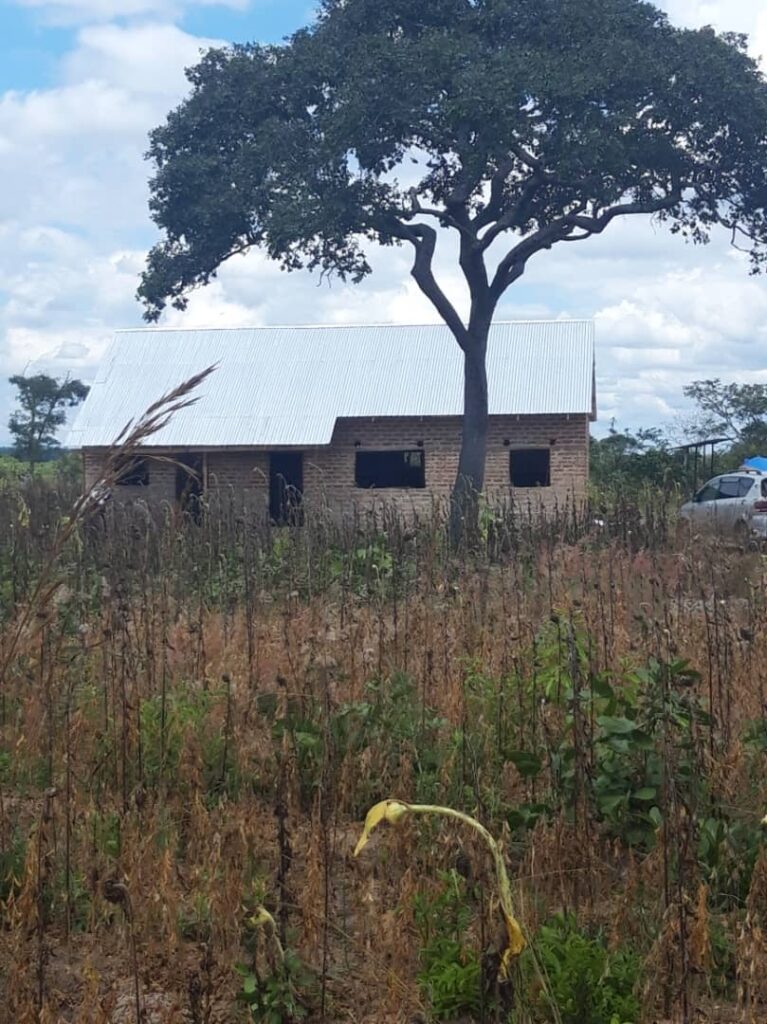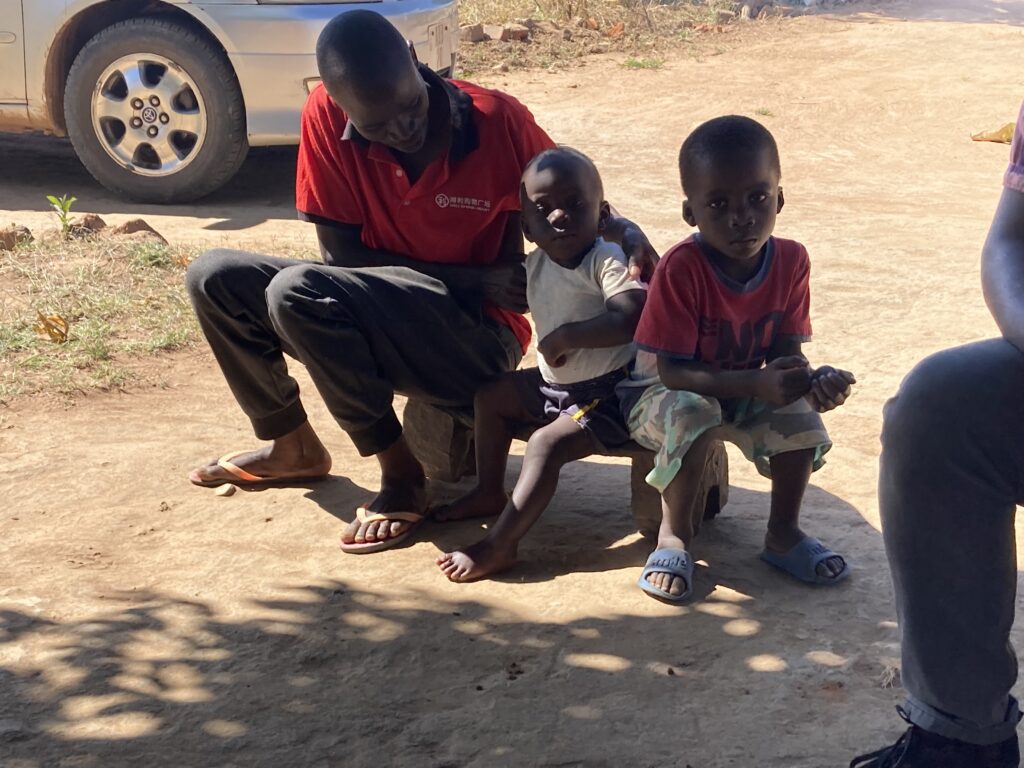This year we, Elizabeth and Caitriona, decided to travel to Nakonde using a different route. We opted to go through Tanzania in the north thus avoiding the very long, bumpy 1,016 km journey on the Great North Road from Lusaka to Nakonde in the south.
We eventually got there but lost 24 hours due to flight cancellations!
We decided to go back again this year as it’s an important period of transiton for the new primary school at St Margaret’s and the development of the farms.
St Mary’s Child Care Centre
There are 76 children at the centre divided between an ECE (early childhood education) class, taught by Ms Nachilongo and a grade 1 class (primary school level) taught by Mr Chanda. We pay the salaries of both teachers. John Malama, who is now in his second year at teacher training college, helps regularly.
St Mary’s CCC is a private structure, owned by the Mpika Diocese. However, we have applied to become a “community school” which means that in the future the government should pay the salary of one teacher and hopefully contribute some educational materials.
70% of the children are single or double orphans, the remaining 30% are vulnerable, from very poor backgrounds. The youngest children are about 4 years old, the oldest are up to 13 years old. We have four 13 year old boys who have either never been to school before or have rarely attended so they still have to learn how to read and write. One of the 13 year old boys started 3 weeks ago. His mother is dead, his father has no interest in him and it was a neighbour who decided to bring him to the centre. He loves it!
Many of the children leave home about 6am to walk 5/6 kms to get to school, they walk in groups. When they arrive they go to church before school starts at 8am. During our visit last year the teachers had asked us if we could also provide breakfast as the children, especially the very young ones, had difficulty concentrating and were falling asleep. They now get a “bun” which is really like a small loaf and a mug of tea. As a result the children’s level of concentration has improved enormously. Lessons end at lunchtime which is served between 12 and 1pm. At least they walk home with a full tummy!
We purchased slates and chalk for the ECE class so this way we are saving paper.
The children were very happy to see us and sang and danced. We had lunch with them too. As well as providing food and education, children need to know they are loved and be aware that there are people who care about them. They are the same as all children all over the world.
St Margaret’s primary school
The new school opened in January 2023. At the moment it is considered a “community school”, pending approval to become a “grant aided school”. There are 206 children, 48 of these children come from St Mary’s CCC.
The Zambian government now strongly recommends that two ECE classes are included in the primary school system. As a result we have two ECE classes (total 70 children), a grade 1 class (48 children) – a grade 2 class (39 children) and a grade 3 class (49 children) at primary school level. The DEBS (District Education Board Secretary) has provided the school with 4 teachers who are paid by the government. We are paying the salary of one of the ECE teachers. In 2024 we will have a grade 4 class, in 2025 a grade 5, in 2026 a grade 6 and in 2027 the school will be completed with a grade 7. Because of this new government recommendation we are missing 2 classrooms which is not a problem now but will be in 2026.
The PTA (parent-teacher association) provides a caretaker, a security guard and has contributed towards educational materials. When the school is grant aided, all the teachers’ salaries will be paid by the government including a percentage of the costs for running the school. However the government will not pay the salaries of non teaching staff.
School starts at 7am and the children go to church on Wednesdays and Fridays before school. Lunch break is between 12 and 13.00, school finishes at 14.30. Many children walk about 4 kms to go to school.
Feeding programme – At St Margaret’s we only give lunch to the vulnerable children. The other children can also have lunch, if they pay. Some children bring packed lunches. At the moment we don’t have enough funds to provide breakfast for the younger vulnerable children.
The school has already gained a good reputation and the DEBS is keen to increase the number of children at our school. The local government schools have 90 – 120 students in one class!
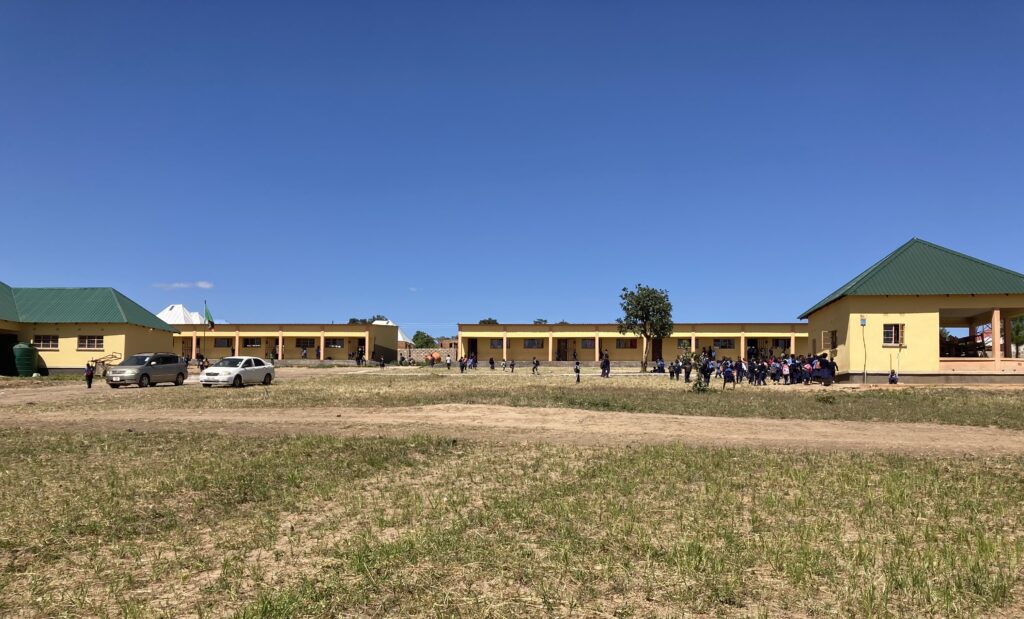
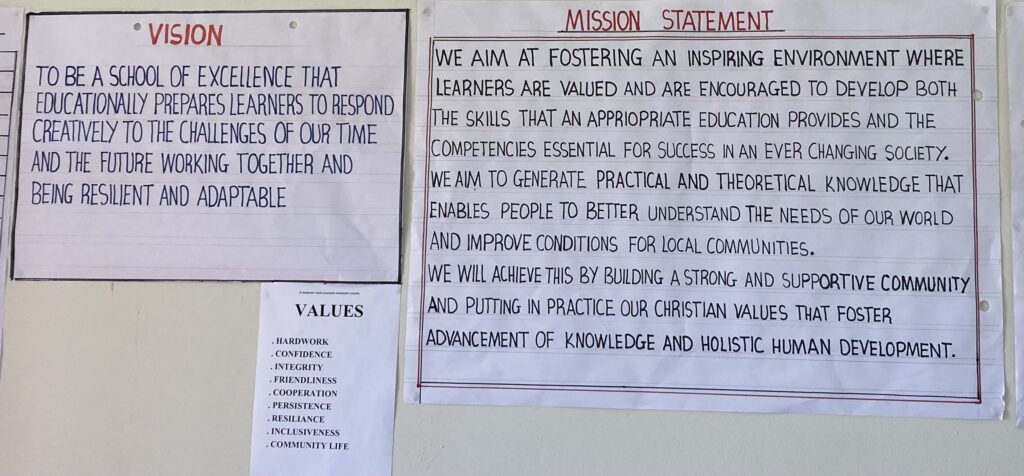
Sewing projects
There are 2 electrical industrial machines, 3 mechanical machines and one overlocker.
Menstrual Hygiene Programme – there is a group of 20 women who were inspired by Caitriona’s presentation last year regarding how to prepare reusable sanitary kits. They meet on Wednesdays and Saturdays. So far 1,000 kits have been made. The aim of the programme is to keep girls in school so some of the kits are given to the girls and some are sold to generate income. Caitriona brought more PUL material which is the waterproof layer. It’s not easy to find something similar in the Nakonde area.
One of the ladies in the group had triplets 3 months ago! The triplets, all girls, were also present at our meeting!
School uniforms – we have a very good tailor who makes the school uniforms for both schools. Wearing a school uniform is compulsory in Zambia. The parents and also the guardians of the vulnerable children are requested to pay or contribute to the cost of the uniform but that doesn’t always happen.
This year the plan is for the tailor to make our school uniforms now and then hopefully later in the year get a contract to make uniforms for other schools. This would be an important source of income.
The Farms
As mentioned in previous updates we now have 2 farms at Mayembe which is about 38 kms from Nakonde.
Farm 1
This is the original farm which consists of 6 hectares. The farmer lives there with his wife and 2 young children. The Bridge of Friendship is funding the construction of a new farmhouse and a borehole.
Farm 2
Last year we bought 12 hectares adjacent to farm 1 and we have started building a farmhouse for the second farmer. The basic structure is up and the roof is on. The next stage is putting in the windows, doors and floor. We’ll do things as we can. The borehole, which is solar powered, is functioning – the well is 60 metres deep. Having this water supply means that we can grow vegetables also during the dry season.
The farms serve two purposes: one is to grow food for the feeding programme at St Mary’s and St Margaret’s and the second is to generate income.
We were very fortunate to have the local Agricultural Officer, Mr Remmy Chilekwa, with us when we visited the farms. We plan to follow the Conservation Farming method https://conservationagriculture.org/our-work/ . This method is much more environmentally friendly and avoids the use of inorganic fertilizer which is expensive and often difficult to find. In the future the fertilizer will be made on site using organic materials.
Maize is the most important crop for us as nshima, a type of polenta, is the staple diet. We also grow sunflower, soyabeans and groundnuts as well as a variety of vegetables. Tree planting continues. We have 6 fishponds at St Margaret’s and poultry at St Mary’s.
It will take time to develop the farms but we are confident that with the advice and support of the Agriculture Officer progress will be made. Farming is not an easy job but it is essential for our work at St Mary’s and St Margaret’s.
